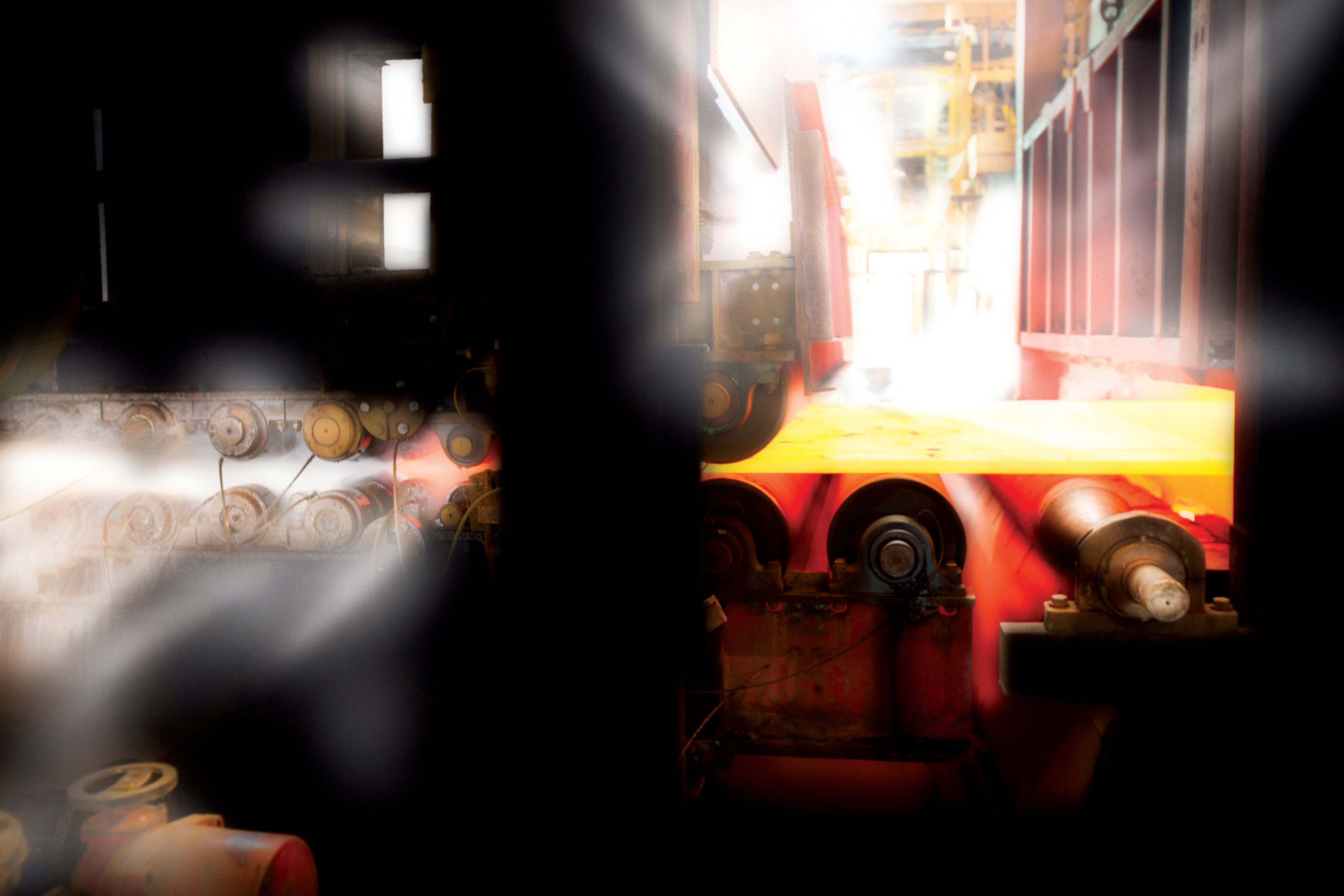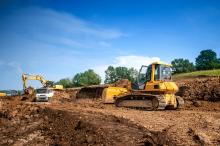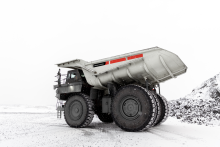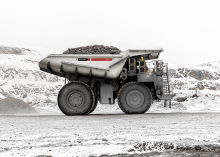
Special high-strength steels can be light, and have built-in energy efficiency
It is estimated that transportation uses 20-25% of the world’s energy and generates 26% of the world’s CO2 emissions.
Add to this the relentless increase in fuel costs, and it is clear that hauliers face both significant environmental and commercial challenges.
Continuous improvements in the fuel efficiency of engines have gone some way to addressing these issues. But a more fundamental review of all the materials used in the construction of tipper trucks, articulated dump trucks (ADTs) and other plant is required to face the challenge longer term, and special steels are already playing a key role in helping vehicle-builders innovate.
The environmental efficiency driver is the
The impact of fuel cost increases needs no explanation: every increase in the running cost for plant and equipment is potentially very damaging to the profitability of any business involved in the quarrying, mining, recycling and construction industries.
The key to capitalising on the benefits already brought by more efficient engines and better fuel management is using the right materials to construct the vehicle or machine in the first place.
Wear is the single biggest cause of downtime and lost production in mining and mineral processing.
And Finland-based metal company Ruukki says that by using special steel products such as it produces, vehicles can be built to provide a longer operating life with lower weight to allow reduced fuel consumption, higher payloads and reduced CO2 emissions.
It says that two of its products in particular, Raex wear resistant and Optim high-strength steels, already familiar among mining and quarrying equipment manufacturers around the world, can be used for machinery throughout the process, from crushing and screening machinery to loading, hauling and specialised vehicles.
By using Raex and Optim steels in the construction of tipper bodies it is possible to create a steel tipper that weighs almost the same as aluminium without any compromise on the durability and multi-purpose usability, says Ruukki, one of four steel companies (out of 40 assessed) included in the Dow Jones Sustainability Index (DJSI), the globally recognised index which includes the top companies committed to sustainable development.
The diagram (picture 3) shows how Raex and Optim combine in a typical tipper body.
“In Ruukki’s tipper body concept, the side-walls are produced by laser welding cut-to-length, thin wear-resistant Raex to thin, wide sheets, which can also be bent to customer specifications,” says Tony Harris, UK country manager for Ruukki.
“Ruukki’s laser welding also enables a combination of different steel grades and material thicknesses into one ready-to-weld component.
“Replacing the traditional thick quarto plates with thinner material creates a lighter end product. Benefits for end-users include higher payloads and savings in fuel consumption. Our customers have typically achieved a weight saving of over 10% by using thin, laser-welded Raex sheets.”
Raex, a high-strength and wear-resistant steel with increased hardness and impact toughness, is said to deliver tipper bodies with an extended lifespan, decreased wear in structural components and reduced whole-life costs.
Ruukki claims the product’s hardness (HBW) delivers a lifetime of up to four times that of standard steel, making it ideal for the bottom plate and side panels of tipper bodies where high impact from materials is an everyday occurrence.
It is also used to form sandwich panels which combine different steel grades into one ready-to-weld component.
Optim is a range of ultra-high-strength structural steels which, combined with “excellent surface quality, accurate dimensions and consistent properties,” are said to deliver lighter structures, higher payloads and lower energy consumption.
It can achieve these benefits as it can be used thinner than lower strength steels, and in the case of one tipper body maker, that provides a 4% larger payload, which is significant over the vehicle’s service life, says Ruukki.
The company’s wear-resistant Raex steels are produced by a direct quenching process, which involves quickly cooling steel with water from around 900ºC to room temperature immediately after rolling thus producing an extremely hard and tough micro-structure in the steel.
“This process also delivers improved steel surface quality and thickness accuracy and enables production of thinner materials, as well as the creation of completely new designs. Direct quenching is less energy intensive too as the reheating stage required after hot-rolling is omitted to deliver a further environmental benefit,” says Ruukki.
“Although Raex wear-resistant steel has three times higher strength and hardness than mild steel, its excellent bending, welding and workshop properties ensure that the material can be used for tipper bodies.
“Working conditions, especially in open pit mines, set high requirements for tipper trucks, especially as they have to cope with higher loads than licensed road vehicles. A suitable thickness for a vehicle’s steel depends on many things, such as the particle size and weight to be carried. Also, because the time from load-to-load is short, the truck’s material needs to have high hardness and wear resistance to maximise its productivity and lifespan.”
Beyond hauling, the company says Raex steel is “ideal” for the excavator buckets used in excavating soil types and mining and quarrying activities; tough excavating projects that require shovels and hydraulic shovel buckets, and crushing, screening and processing equipment where it is suitable for liner plates, for conveyor systems, hoppers, feeders and chutes.
Illustrating the potential savings to operators of all types of hauling vehicles, Ruukki offers a comparison showing the fuel consumption differences between a hooklift container truck, built using Raex and Optim special steels, and one created using standard steel.
“Own weight and wear-resistance are important factors of hooklift containers in the construction and waste management sectors,” says the company.
“With Raex wear-resistant steel, the material thickness of the redesigned container reduced from 5mm to 2.5mm. The new 39m3 container design, with reduced weight of 1,780kg, has increased payload and decreased air-resistance. Fuel consumption of the vehicle is reduced by 4litres/100km and this means fuel cost savings of over €60,000 during its lifetime (assuming lifetime of ten years; driving 100,000km/year, and a fuel cost €1.6/litre).”
Scottish investment
Another major producer,
Used in a variety of wear-dependent applications, such as buckets, truck body linings and conveyor parts, it is available in 400, 450 and 500 BHN wear plate grades.
“The new Abrazo line-up also features guaranteed toughness grades, giving customers peace of mind when specifying abrasion resistant steel plate for use in extreme environments,” says Tata Steel.
With specified high impact toughness at temperatures down to -40ºC, the 400 and 450 grade plate is designed to operate in the coldest climates.
“Developed specifically for the mining, quarrying, and construction industries, the roller-quenched steel has evolved through Tata Steel’s close working relationships with customers, and the addition of new equipment and processes in Scotland has enhanced the products’ capabilities,” says Tata.
Manufactured to finer tolerances, the improvements in production mean that key parameters, such as furnace atmosphere, can be accurately controlled.
“This not only benefits the finished plate’s physical appearance, but also removes surface defects and reduces scaling. This smoother finish provides a more even wear rate and prolongs the working life of the plate itself. A knock-on effect is that Tata Steel can also provide improved consistency, allowing manufacturers better control of their order cycle.”
The increase in finished plate width to 3,200mm means that larger components can be produced in one piece, reducing the number of potential welds and simplifying the manufacturing process.
“This, along with the increase in output capacity volume by 50% means that Tata Steel is able to satisfy more customers with a wider range of plate products,” says the company.
Part of the investment has seen a new heavy plate press installed at Dalzell, near Motherwell, County (north) Lanarkshire, increasing the volume of heavier plate produced and improving final plate flatness (now better than EN10029 special flatness tolerances).
“The new production process also provides better traceability for products, thanks to the automatic stamping and marking system, allowing easier identification of material. The final plate product can be supplied in the as-processed, shot-blasted, or shot-blasted and primed conditions, as required by the customer,” says Tata, which provides a range of specialist technical support and advice to customers.
From information on cold bending, cutting and welding through to intelligent use of products to reduce manufacturing costs, Tata Steel’s extensive research, development and test facilities are keen to share their expertise.
Tata Steel’s European operations comprise Europe’s second largest steel producer with the main steel-making operations in the UK and Netherlands, which supply steel and related services to the construction, automotive, packaging, lifting and excavating, energy and power and aerospace markets worldwide.
Its lifting and excavating sector serves the CEME (Construction Earthmoving Equipment), cranes, mining and fork-lift truck industries, and it manufactures track shoe products at its Skinningrove plant in north-east England.









